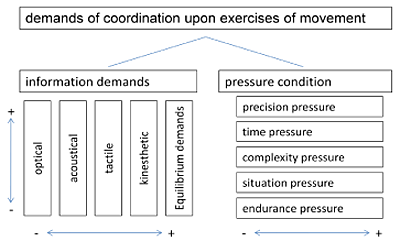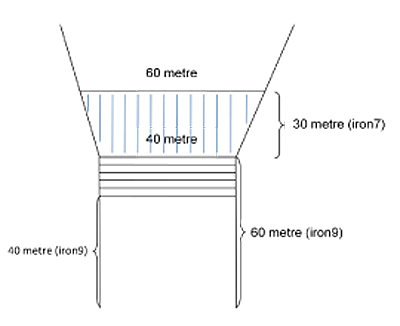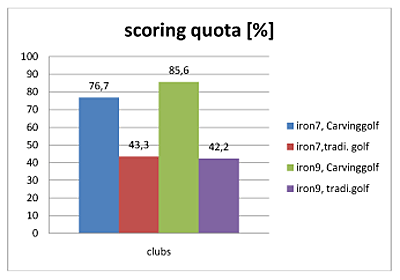
Florian Kreuzpointner, Dr. Ferdinand Tusker Department of Biomechanics in Sports, Faculty of Sports Science Technical University of Munich |
|||||||||||
Golf is a sport that is relatively hard to learn. Does that have to do with the fact that most people start to learn this sport when they have reached an age beyond the “golden years of learning“? Or is it due to the fact that golf is a very complex and in respect to coordination highly demanding game? It is no doubt a combination of both aspects. One must remember “that during late adolescence (authors note: years 10 – 12 for girls and 10 – 13 for boys ), possibly wide and varied competitive foundations should be laid (….),using the best learning age for a child’s motor activity during sports instruction as well as during training, especially for a sound coordinated sport-technique related education” (Schnabel 2007, p. 307 ). This does not mean that one can’t become a top golfer in a later age with a good single handicap but one sets such foundations in order to be able to deal more easily with new motor demands arising later in life (cf. Philippi-Eisenburger 1990). There are many points that have to be considered; an example is the difficulty to coordinate the abundance of partial movements of the player’s body. Additionally certain physical condition is demanded of the golfer. Looking at the model pertaining to the catagories of coordination demanded (cf. Neumaier 2006, fig.1), one notices that playing golf is more than just hitting the ball from one point to another.  Fig. 1: coordination model accord. to Neumaier. This model is developed through the use of regulators. This regulator model can be adjusted according to the degree of complexity demanded. In golf it seems reasonable to regulate the information regulator higher than the acoustic one. In accordance to the importance of the information and the subjective mental pressure you can evaluate the coordinative needs of golf. (mod. Neumaier 2002, S.11). It requires the processing of information demands of optical, acoustical, tactile, kinaesthetic and vestibular stimuli. Added are also different pressure conditions. In general one must conclude that for older golfer it is more difficult to learn these complex movements. The older one gets the harder it is to learn new patterns of movement and a decrease in performance is expected when carrying out demanding coordination exercises (cf. Philippi-Eisenburger 1990 ). Responsible for these facts are the neuron ties. The human brain has approximately 1011 nerve cells ( cf. Silbernagel 2003 ). As previously pointed out, it is therefore important to create many neuron ties already in early years because only frequently used nerve cells remain stable and can be variably recalled. How did it happen, that you never forget how to ride a bicycle? Because this movement has been repeated more than a million times over the years. This has strengthened the neuron ties to such a degree that they can be recalled at any time. It is , however, not possible for a golf player to swing his club as often as pedalling a bike. The daily training a golf pro is essential to perfectionize his swing so that he develops the variability he needed. That is the goal of every player, swinging perfectly with every club used. This conventional golfer has two woods, six irons, approx. three wedges and one putter in his golf bag. Without the putter and the wedges, eight clubs remain in his bag, each having a different shaft length. This means the golfer has to master eight different standing positions, eight different positions to the ball and eight different swing planes. The Carvinggolf technique was developed in order to counteract this problem and thereby minimize the sources of error. At the same time, insight is given to the motor learning process. Carvinggolf is a new golf swing technique. It is based upon the technique of pendulum motion and it does not use active body rotation. The goal of Carvinggolf is based on only a few steps so you may convey a golf swing to everyone who wants to play golf. Hereby, the golf swing is reduced to five essential steps in order to make the learning process easier. An additional aspect which makes the learning process easier is the use of Carvinggolf clubs having the same shaft length compared to traditional clubs with different shaft lengths. All clubs are equally balanced using the same swing pattern and having the same lie. The clubs have similar to traditional clubs different lofts which affect the flight pattern of the ball. The characteristics of the clubs combined with the Carvinggolf technique make it easier for the player to learn the game. In order to prove the learn ability of different golf techniques, a blind study was made with beginners. Participators of the study were a tennis-active group of 8 women and 4 men ranging from the age of 52 to 64. Lessons were set for 2 days, encompassing 2 teaching units per 120 minutes. Two groups were formed; one group learned only the Carvinggolf technique using Carvinggolf clubs, the other group learned the traditional golf technique of the PGA, using only traditional golf clubs. In order to control the teaching effect upon the groups, the pros exchanged groups the second day. At the end of training period the students were tested. The goal of the test was to hit the ball within a given corridor ( fig. 2 ).  Fig. 2 : The scoring zone for the 9iron reached 60 meters, whereby the proband had to hit at least a distance of 40 meters in order to score. The width of the scoring zone encompassed 40 meters. The demand to score with the 7iron encompassed at least 60 meters, whereby the scoring area was widened in order to compensate for the scattered balls hit (at a distance of 90 meters, the area was 60 meters wide). The diagonal hatch lines show the scoring area of the 9iron and the longitudinal hatch lines that of the 7iron. 15 balls were played per 9iron and per 7iron, whereby the group “Carvinggolf” only played with Carvinggolf clubs and the “traditional golf “ group only used traditional clubs. The result was that the “Carvinggolf “ group achieved a higher scoring quota. Using the 9iron, the “Carvinggolf” group reached a score of 86%. The “traditional golf” group, using the same iron, scored only 42%. Using the 7iron resulted in a score of 77% through the “Carvinggolf” group and 43% through the “traditional golf” group.  Fig. 3: Scoring quota in %. This diagram shows that the pupil learns faster and more successfully using Carvinggolf clubs. Carvinggolf provides a good possibility to learn the game much faster and presents a sound alternative to the traditional teaching method. The beginner gets into the game more quickly and therefore has more fun learning the game. The use of simple movements leads to a faster learning progression. The player does not actively rotate his body. The advantages are due to the always equal position of the ball and the use of the same swing planes as compared to different ball positions and different swing planes using the traditional method. All Carvinggolf clubs have the same length thereby allowing the player using only one ball position (the ball is hit out of the centre position). All clubs can played using the same swing plane. This study has shown that golf beginners, using the Carvinggolf technique, can learn the game much faster. Literatur:
Contact the author under: Dipl. Sportwiss. Florian Kreuzpointner Department of Biomechanics in Sports, Faculty of Sports Science Technical University of Munich Connollystr. 32 80809 München 089 / 289 24585 florian.kreuzpointner@sp.tum.de Munich, 04/2009 << back to Press |
|||||||||||
Imprint
• Copyright 2009© by Carvinggolf |